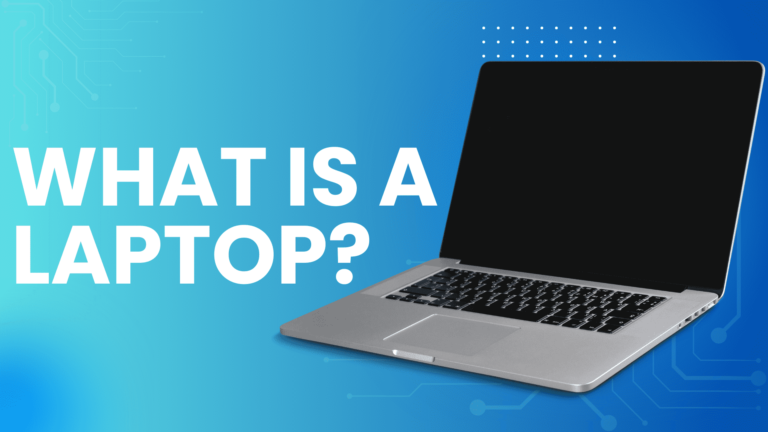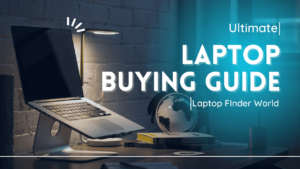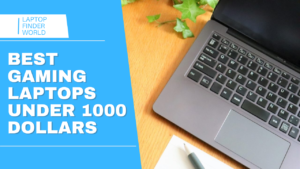Have you ever wondered what is a laptop and how it differs from a desktop computer? A laptop is a portable personal computer that combines all the key components and capabilities of a desktop machine into one compact, convenient device you can take almost anywhere. While the earliest “portable” computers were bulky, heavy contraptions, modern laptops have evolved into sleek, lightweight powerhouses that fit easily into a backpack or briefcase. With built-in screens, keyboards, trackpads, and rechargeable batteries, laptops give you the flexibility to work, play, or create wherever you happen to be.
In this article, we’ll dive into the fascinating world of laptops, exploring their history, the key components that make them tick, the different types designed for various needs, and what to look for when shopping for your perfect portable computer. So grab your favorite notebook (the digital kind!) and let’s uncover the secrets of these incredible machines.
History and Evolution of Laptops
Have you ever wondered how the sleek, powerful laptop you use today came to be? The journey from the first portable computers to the modern laptop is a fascinating tale of innovation and engineering. Let’s take a stroll down memory lane and explore the milestones that have shaped the laptops we know and love.
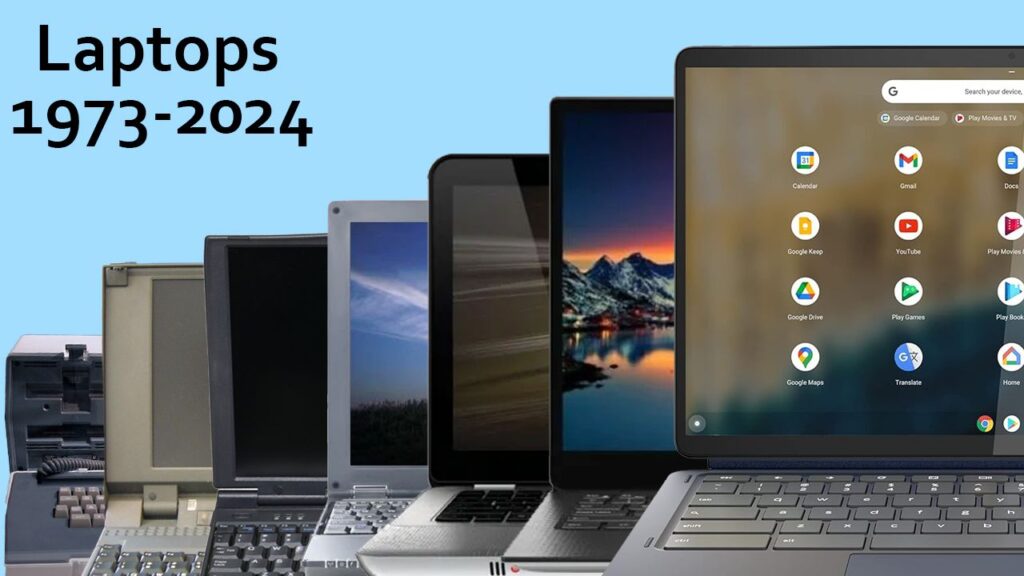
The Osborne 1, released in 1981, is often hailed as the first truly portable microcomputer. Weighing in at a hefty 24.5 pounds, it wasn’t exactly light, but it was a start. Can you imagine lugging that around today? Yet, for its time, it was groundbreaking, offering a glimpse into a future where computers could travel with their users.
Following the Osborne 1, the Compaq Portable came onto the scene in 1982. It was another early “luggable” computer, tipping the scales at 28 pounds. While still heavy, it was a step towards more portable computing solutions.
Then, in 1983, the Gavilan SC was introduced, credited as the first laptop to feature the modern clamshell design that has become synonymous with laptops. This design not only protected the screen and keyboard during transport but also set the standard for all future laptops.
In the same year, Tandy released the TRS-80 Model 100, an early compact, portable computer that was more manageable in size and weight compared to its predecessors. It was a sign that manufacturers were getting serious about making computers truly portable.
By 1986, the Compaq Portable II had managed to reduce its weight to a more reasonable 12 pounds, making it quite portable for its time. It’s incredible to think how far we’ve come, isn’t it? And just for a bit of trivia, did you know that the first Apple computer was priced at $666.66 back in 1976? That’s quite expensive, especially when you consider inflation!
From the bulky and heavy machines of the early 1980s to the ultrathin and lightning-fast devices of today, laptops have truly evolved into the indispensable devices we rely on every day. So, the next time you open your laptop, take a moment to appreciate the rich history and the incredible advancements that have made it possible for you to carry a powerful computer in your backpack or briefcase. Who knows what the future holds for the evolution of laptops? One thing is for sure, though—the journey is far from over.
Types of Laptops
With so many different laptops on the market, it can be overwhelming to figure out which one is right for you. That’s why it’s important to understand the main types of laptops and what sets them apart. Let’s break it down, shall we?
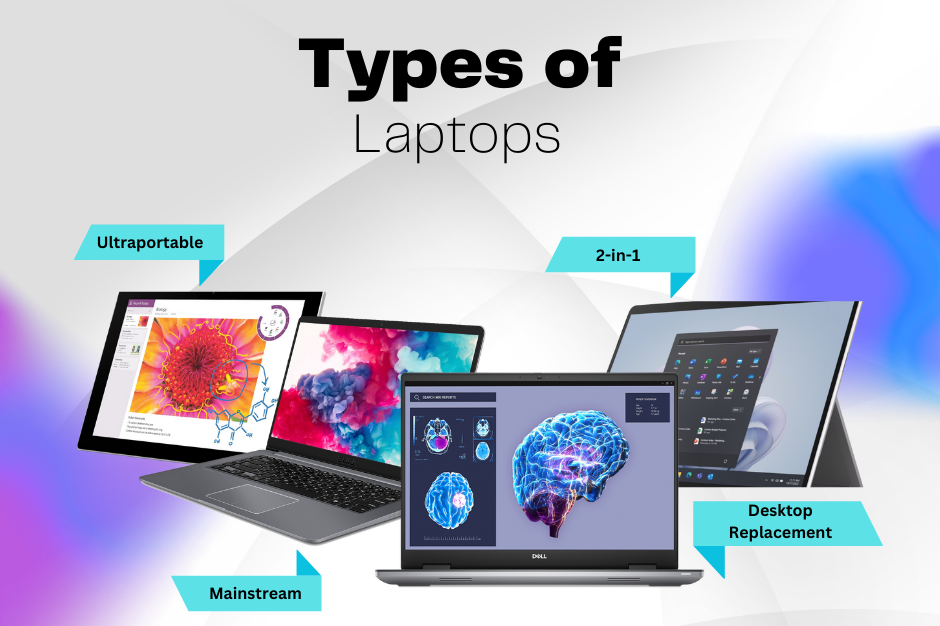
Ultraportable Laptops
If you’re always on the go, an ultraportable laptop might be your perfect match. These lightweight machines are:
- Thin and easy to carry, slipping right into your bag
- Built for long battery life, so you can leave the charger at home
- Ideal for frequent travelers who need to work on planes, trains, and everywhere in between
The demand for thin and light laptops with great battery life is booming in the U.S., according to recent market research from Statista. It’s easy to see why—we all want a laptop that can keep up with our busy lifestyles!
Mainstream Laptops
For most people, a mainstream laptop offers the best balance of:
- Solid performance for everyday tasks
- Portability to take it with you when needed
- Affordable price that won’t break the bank
These versatile machines can handle work, play, and everything in between without any fuss. They’re the reliable workhorses of the laptop world.
Desktop Replacement Laptops
Need some serious power? A desktop replacement laptop might be the way to go. These beefy machines pack in:
- High-performance components like fast processors and dedicated graphics cards
- Larger size and weight to accommodate all that power
- Everything you need for resource-intensive tasks like gaming, video editing, or 3D modeling
While not as portable as other laptops, desktop replacements offer unbeatable performance when you need it most. They’re like having a desktop computer you can take with you!
2-in-1 Laptops
Can’t decide between a laptop and a tablet? Get the best of both worlds with a 2-in-1! These unique devices feature:
- The ability to switch between laptop and tablet mode
- Either a detachable keyboard or 360-degree hinge to fold the keyboard back
- A touchscreen display for intuitive control
2-in-1s offer incredible flexibility to use the device in different ways depending on your needs. Typing up a report? Use it like a regular laptop. Watching a movie? Flip it into tent mode for a perfect viewing angle. Jotting down notes? Detach the keyboard and write with a stylus right on the screen.
Interestingly, studies have shown there may be ergonomic benefits to 2-in-1 designs as well. The ability to position the screen at different angles can reduce neck and eye strain compared to traditional laptops. Talk about a win-win!
Key Components of a Laptop
Now that we’ve explored the different types of laptops, let’s pop the hood and take a look at what makes them tick. Understanding the key components inside a laptop is crucial for making an informed buying decision. After all, you wouldn’t buy a car without knowing what’s under the hood, right?
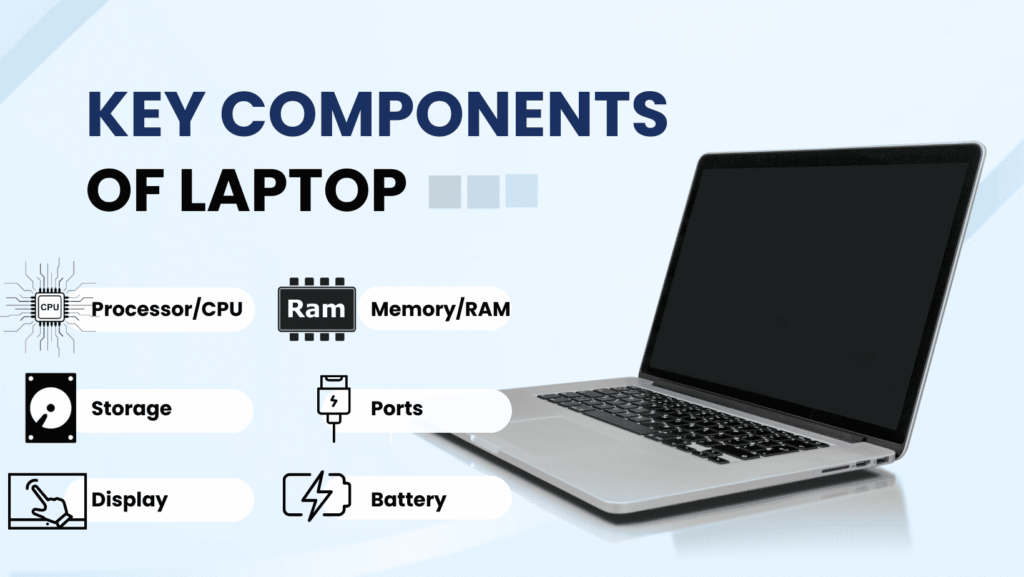
Processor/CPU
Think of the processor or CPU as the brain of your laptop. It’s the component that executes instructions and makes everything run. The two main specs to look at with CPUs are:
- Clock speed (measured in GHz): how fast the CPU can execute instructions
- Number of cores: allows for multiple tasks to be worked on simultaneously
In general, higher clock speeds and more cores mean better performance. The main CPU manufacturers for laptops are Intel and AMD.
Memory/RAM
RAM, or random access memory, is like your laptop’s short-term memory. It provides fast temporary storage for the data your computer is actively using. Key specs to look for are:
- Amount (measured in GB)
- Type (DDR3, DDR4, etc.)
More RAM allows for better multitasking and smoother performance, especially with memory-hungry applications. 8GB is a good baseline for most users.
Storage
If RAM is your laptop’s short-term memory, storage is its long-term memory. This is where all your files, programs, and the operating system itself reside. The two main specs to consider are:
- Capacity (measured in GB or TB)
- Type (HDD or SSD)
HDDs (hard disk drives) are cheaper and offer more capacity, while SSDs (solid state drives) are much faster but pricier per GB. A common setup is a smaller SSD for the operating system and key programs, paired with a larger HDD for file storage.
Display
The display is your window to the digital world, so it’s an important component to get right. Key specs include:
- Size (measured diagonally in inches)
- Resolution (number of pixels)
- Panel type (TN, IPS, OLED)
Higher resolution means a sharper picture, while IPS and OLED panels offer better colors and viewing angles than TN. Touch screens are also available on some models. Consider how you’ll be using your laptop to decide what specs are most important.
Battery
Unless you plan on keeping your laptop tethered to a power outlet 24/7, battery life is crucial—especially with the rising demand for thin and light laptops that can last all day. Laptop batteries are typically lithium-ion and measured in Wh (watt-hours). The higher the number, the longer the battery life.
Of course, actual battery life varies greatly depending on your usage. Manufacturers’ claims are often based on unrealistic scenarios. Be sure to read reviews to get real-world battery life estimates.
Ports
Last but not least, don’t overlook ports! Having the right connectors can make or break your laptop experience. The main types to look for are:
- USB (for connecting accessories like mice and external drives)
- Thunderbolt (for high-speed data transfer and external displays)
- HDMI (for connecting to TVs and monitors)
- Audio jack (for headphones and speakers)
- SD card slot (for transferring photos and other files)
More ports mean more expandability, allowing you to customize your laptop for your needs.
Whew, that was a lot of information! But don’t worry, you don’t need to be a computer engineer to make sense of it all. Just focus on the key specs that are most relevant to your needs.
By understanding these core components, you’ll be well-equipped to evaluate different laptop models and find the perfect one for you. In the next section, we’ll take a closer look at the software side of things with operating systems.
Laptop Operating Systems
Now that we’ve taken a look under the hood at laptop hardware, let’s boot up and explore the software that makes it all run: the operating system (OS).
An operating system is like the conductor of the orchestra, coordinating all the different components and programs so they work together in harmony. It’s the interface between you and the machine. Choosing the right OS is a key part of the laptop buying process.
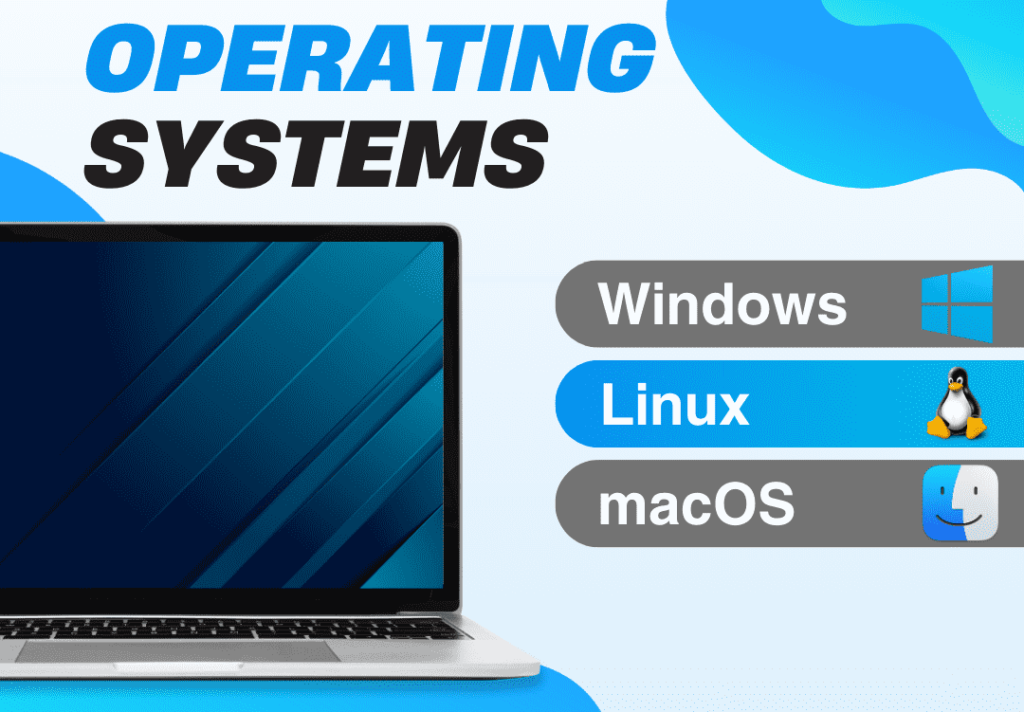
Windows
Windows is by far the most common laptop operating system. It’s made by Microsoft and comes pre-installed on a wide variety of laptop brands and models (basically everything except Apple). The latest version is Windows 11.
The main advantages of Windows are:
- Widest compatibility with both software and hardware
- Huge selection of programs and games
- Familiar interface most people are used to
If you need to run specific Windows software or want the most options in terms of laptop specs and prices, Windows is the way to go.
macOS
macOS is Apple’s proprietary operating system that comes on all Macs, including MacBooks. It’s known for its sleek design, stability, and tight integration with other Apple products and services.
Key selling points of macOS include:
- Ease of use, even for tech beginners
- Robust built-in security and privacy features
- Seamless integration with iPhone, iPad, etc.
- Free updates with cool new features
If most of your other devices are Apple and you value things “just working” over maximum customization, a MacBook with macOS is worth considering.
Linux
Linux is a free and open-source operating system that emphasizes privacy, security, and user control. Popular versions (called “distributions”) include Ubuntu, Mint, and Fedora.
Reasons to use Linux:
- Completely free to use, modify, and distribute
- Highly secure and private (your data belongs to you)
- Tons of free open-source software available
- Can revive old laptops with poor performance
The downside is a steeper learning curve, since it works quite differently from Windows and macOS. But if you’re willing to learn and value the principles of open-source, Linux can be very rewarding.
Chrome OS
Chrome OS is Google’s unique operating system that powers Chromebooks. It’s a lightweight, web-centric OS built around the Chrome browser and Google’s suite of online services like Drive, Docs, and Gmail.
Advantages of Chrome OS:
- Fast boot times and smooth performance
- Simple and easy to use (great for kids/seniors)
- Secure, with automatic updates
- Affordable laptops with long battery life
The trade-off is more limited functionality since Chrome OS relies heavily on web apps over installed programs. But for a simple, low-maintenance laptop for everyday tasks, a Chromebook with Chrome OS fits the bill.
Ultimately, the “best” operating system depends on your specific needs and preferences. Consider what types of programs you need to run, your budget, and your familiarity with each platform.
Laptop Brands
When it’s time to pick a new laptop, the brand can be just as important as the specs and features. Why? Because the brand not only reflects the quality and reliability of the laptop but also determines the kind of after-sales support you can expect. With so many options out there, it’s no surprise that Lenovo, Dell, and HP are leading the pack, shipping 60% of laptops worldwide. Let’s dive into some of the top laptop brands and see what they have to offer.
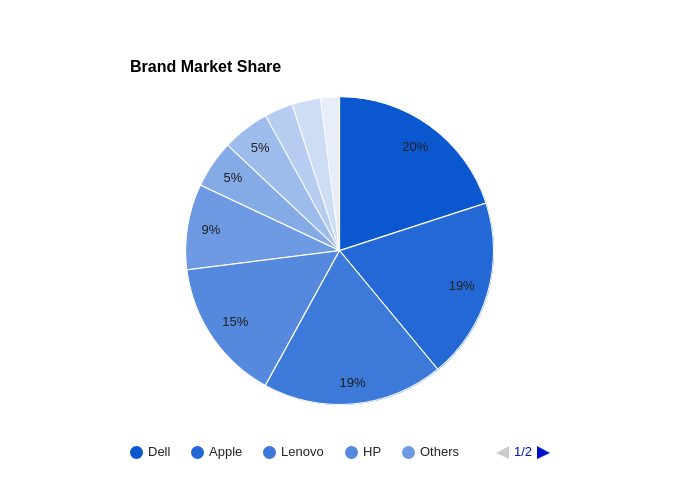
Dell
With 20% of the laptop market share, Dell is a heavyweight in the laptop industry. Known for their robust construction and reliable performance, Dell laptops are a common sight in offices and homes alike. Whether you’re a student, a professional, or a gamer, Dell has a laptop for you. From the budget-friendly Inspiron series to the high-performance XPS line and the Alienware gaming beasts, Dell’s range is as diverse as the needs of its users.
Apple
Close on Dell’s heels with a 19% market share, Apple’s laptops are synonymous with premium design and a seamless user experience. If you’re already part of the Apple ecosystem, a MacBook might just be the perfect fit. Apple’s macOS is praised for its ease of use and integration with other Apple devices. Plus, with a reputation for stellar build quality and customer service, Apple laptops are a top choice for creatives and professionals who prioritize design and reliability.
Lenovo
Matching Apple, Lenovo also holds a 19% share of the laptop market. In 2021, Lenovo sold a staggering 82.1 million PCs, a testament to their popularity. Offering a wide range of laptops from the budget-friendly IdeaPad to the business-centric ThinkPad, Lenovo caters to every segment of the market. Their laptops are known for their durability and innovative features, making them a solid choice for anyone looking for a reliable workhorse.
HP
HP, with a 15% market share, is another major player in the laptop space. They offer a diverse portfolio that includes everything from the budget-friendly Pavilion series to the premium Spectre and Envy lines. HP laptops are often praised for their stylish designs and versatility. Whether you’re a student, a professional, or someone who needs a reliable machine for everyday use, HP has a laptop that can fit your needs.
Microsoft
Holding a smaller slice of the pie with 5% of the market, Microsoft has made a name for itself with the Surface line of laptops. These devices are designed to showcase the best of Windows and often feature touchscreens and detachable keyboards, blurring the line between laptops and tablets. If you’re looking for a laptop that can double as a creative canvas or a portable workstation, Microsoft’s Surface might just be the innovative solution you need.
Acer
Acer, with a 3% market share, is known for providing value-packed laptops that don’t break the bank. Their Aspire series, for example, offers a balance of performance and price, making it a great option for budget-conscious consumers. Acer also ventures into the gaming world with their Predator laptops, which are designed to deliver top-notch performance for gamers on the go.
Asus
Also holding 3% of the market, Asus is renowned for pushing the envelope with their laptops. They offer a wide range of options, from the ultra-thin ZenBook series to the powerful ROG gaming laptops. Asus is particularly known for their innovation, often being the first to market with new features and designs. If you’re someone who values cutting-edge technology and a wide array of choices, Asus might just have the laptop for you.
Choosing the right laptop brand is a decision that goes beyond just specs and price. It’s about finding the perfect match for your lifestyle and needs. Whether you prioritize design, performance, innovation, or value, there’s a brand out there that has the laptop you’re looking for. So, which one will you choose?
Laptop Buying Guide
Buying a laptop can feel like navigating a maze with endless turns and choices. But don’t worry, we’re here to guide you through this maze with some simple steps that will lead you to your perfect laptop match. Whether you’re a student, a professional, or just looking for something for your everyday needs, following these steps will ensure you make an informed decision that aligns with your needs and budget. Check out our detailed article on the laptop buying guide.
Assess your needs and budget
First things first, what do you need your laptop for? Is it for gaming, professional work, or just casual browsing and streaming? Your usage will dictate the kind of specs you should be looking for. For instance, gamers and professionals might need a more powerful processor and graphics card, while casual users might prioritize battery life and portability.
Setting a budget is equally important. Remember, the more you pay, the better performance and design you get. But that doesn’t mean you can’t find a good laptop within a modest budget. It’s all about finding the right balance between what you need and what you can afford.
Read reviews from trusted sources
Once you have a rough idea of what you’re looking for, it’s time to dive into reviews. Why? Because reviews give you a glimpse into the real-world performance of laptops. Look for reviews from both experts and regular users to get a balanced view. What are the pros and cons? How does the laptop perform under pressure? These insights can be invaluable.
Compare specs and prices
Now, let’s talk specs. You’ll want to compare processor, RAM, storage, and display across different models. But don’t forget to look out for sales and discounts. Sometimes, you can snag a higher-spec laptop for the same price as a lower-spec model if you time your purchase right.
Consider brand reputation and support
Why does the brand matter? Because it’s not just about the laptop; it’s about the after-sales support and warranty too. Stick with brands known for their reliability and customer service. A little research now can save you a lot of headaches later.
Use our Laptop Finder Tool
Feeling overwhelmed? Our Laptop Finder Tool is here to help. Simply go to the page, use the filters to select the RAM, processor, and other specs according to your needs, and let the tool do its magic. It’s a quick and easy way to narrow down your options and find the laptop that’s just right for you.
Laptop Care and Maintenance
You rely on your trusty laptop for work, school, entertainment, and staying connected. But are you giving your portable pal the TLC it deserves? Just like any machine, laptops need some regular care and maintenance to keep purring along at peak performance. Don’t worry, laptop upkeep doesn’t require an engineering degree—just a bit of know-how and consistency. Your laptop will thank you!
Protect with a case or sleeve
One simple way to shield your laptop from the bumps and bruises of daily life is to outfit it with a protective case or sleeve. This extra layer of padding helps prevent scratches, dings, and more serious damage from drops and impacts. Plus, a case makes it safer and easier to transport your laptop, whether you’re just heading to a coffee shop or flying across the country.
I learned this lesson the hard way in college when I tossed my naked laptop into a backpack—it came out looking like it had been through a warzone! Now I never leave home without my laptop zipped snugly into a padded sleeve. For more info, check out our in-depth guide on how to Clean a Laptop.
Clean the exterior regularly
All those hours of tapping away at the keyboard and swiping the trackpad can leave behind a grimy buildup on your laptop’s surfaces. To keep things clean and hygienic, gently wipe down the exterior with a soft, lint-free cloth. For stubborn smudges, lightly dampen the cloth with water or a 50/50 mix of white vinegar and distilled water. Avoid harsh cleaners or too much liquid, which could damage the finish or seep inside.
Don’t forget to carefully clean the screen too—dust and fingerprints can really dull the view. Use a microfiber cloth designed for electronics and avoid pressing too hard. If needed, lightly mist the cloth (never the screen itself) with a laptop-safe cleaning solution. Repeat this quick cleaning routine weekly and your laptop will look factory-fresh.
Optimize software and storage
Is your laptop feeling sluggish? The culprit could be a combination of unused apps hogging resources, a cluttered hard drive, and outdated software. To get back up to speed:
- Uninstall programs you no longer use
- Delete old files and transfer large media to the cloud or an external drive
- Run regular antivirus and antimalware scans
- Keep your operating system and programs updated
I like to set aside some time every few months for a “digital decluttering” session to keep my laptop lean and mean. It’s oddly satisfying to clear out the virtual cobwebs! Learn more in our full article on Increasing Battery Life.
Avoid excessive heat
Laptops can really heat up under the collar, especially when working hard. To prevent damaging overheating, make sure to:
- Keep air vents unblocked
- Use your laptop on a hard, flat, non-insulating surface (not a pillow or blanket)
- Don’t leave your laptop in hot environments like a car on a summer day
- Consider using a cooling pad if you feel excessive warmth
If your laptop’s fans are constantly roaring or the surface feels hot to the touch, it may be overheating. Our guide on Overheating Problems can help you troubleshoot.
Charge the battery properly
Laptop batteries have come a long way, but they still require a little finesse. For the longest battery life:
- Try to keep the charge between 20-80% when possible
- Avoid letting the battery fully discharge too often
- Calibrate the battery every 2-3 months by allowing a full charge and discharge
- Don’t leave your laptop plugged in 24/7, which can reduce battery capacity over time
With some easy adjustments to your charging habits, you can help extend your laptop battery’s lifespan.
Conclusion
From humble beginnings as heavy “luggable” computers, laptops have undergone an amazing evolution. Can you imagine lugging around a 25-pound laptop today? Thankfully, those chunky boxes have transformed into today’s sleek, ultraportable marvels.
Yet the innovations don’t stop there. As technology races forward, laptops will keep adapting to our changing needs. They’ll become even more powerful, longer-lasting, and incredibly versatile – true mobile computing chameleons able to tackle any task.
But at their core, laptops remain indispensable digital sidekicks that keep us connected and productive wherever life takes us. With so many choices, finding your perfect laptop match takes some personal soul-searching. What’s your usage? What’s your budget? Once you understand the key specs and do your research, you’ll be ready to embrace the future.
Just think – that laptop you’ve been eyeing could be the magical window to incredible adventures, career breakthroughs, or simple kick-back-and-chill moments. An investment in a great laptop is an investment in your ability to explore life’s possibilities. So what are you waiting for?

